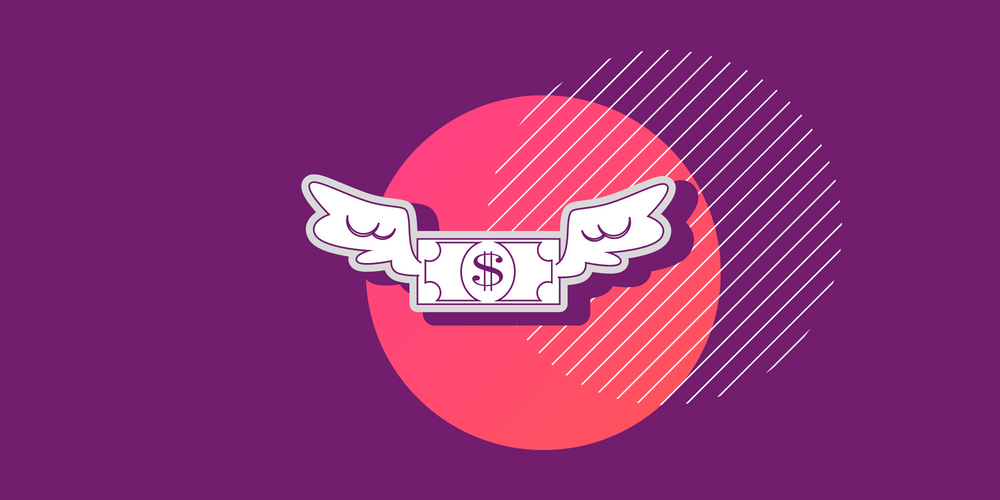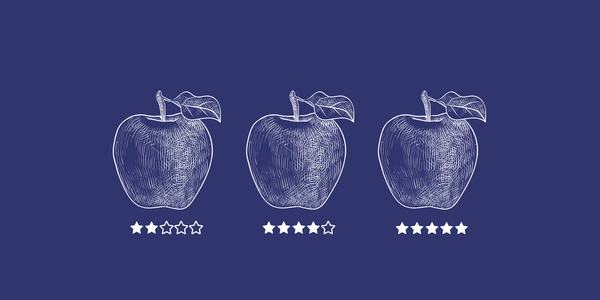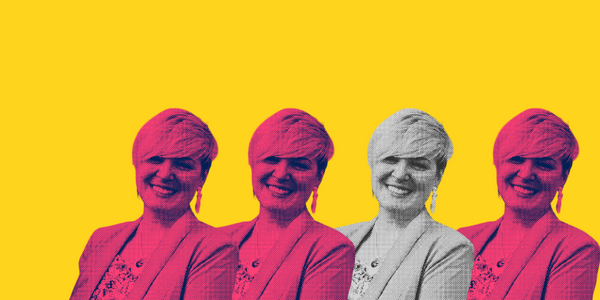Target market and target audience use cases
Last week I published a step-by-step guide on how to define your target audience, and I mentioned three pretty important terms every business owner should know: the target market, target audience, and buyer persona.
Since I posted that, I saw several messages slide into my inbox asking for elaboration.
As always, my goal is to keep it practical, useful, and easily digestible. I wanted to expand on this topic without turning it into a theoretical dump, so I got an idea to put together some relatable examples for you.
Why knowing proper terminology is important
And not just for a marketer!
Anyone involved in the operational side of a business should have a basic understanding of marketing terminology. You don’t need to get advanced marketing certification to grow your business, but knowing some key phrases will give you context, explain dependencies, and boy, are they useful when you need to google!
It’s important to note that marketing is not an exact science and there are a lot of different marketing schools of thought, theories, and official definitions. Depending on location, industry, and size of business, these definitions might differ quite a bit. The terminology also changes over time, to match the changes in the global market.
The ones that I picked are those that from my experience have the biggest practical value for anyone looking to launch or grow a business.
How the target market, target audience, and buyer persona are related
The target market is commonly described as the entire group of people you want to sell your product or service, whereas the target audience is a smaller group of people that you pick based on certain criteria that have a higher likelihood of becoming a customer. A buyer persona is a fictional representation of a member of your target audience.
But. I am a big advocate for practical application (duh) and with that, I like to expand the target market definition beyond the audience. It’s the entire environment in which you’re doing business.
This is the secret sauce of big companies with great results: nothing is observed in a silo. And the emphasis of target market research is on the word market.
The reason is simple.
Variables like competition, supply chain, and similar can deeply influence your marketing. These variables will help us determine the pricing, positioning, and help us find key differentiators.
Yeah, kind of important.
Big companies often have entire research and analytics departments that regurgitate information to the marketing teams, so they have the luxury of drawing marketing conclusions of already built data. But, smaller companies can’t afford this and need to take every opportunity to understand the market as a dynamic, complex environment.
I’ll show you two hypothetical scenarios from different industries: hospitality with a physical location and e-commerce without a physical location.
Note: these are heavily stylized, so please take them just as guiding examples of the thought process and not as a how-to guide.
Use case: a restaurant
Industry: hospitality, food service, food and beverage
Location: physical, the capital city
Prices: 💸💸💸💸
In this case, we (or should I say oui) own a French restaurant.
The target market is a posh street full of people window shopping - they are all possible customers, due to their physical location at this moment.
It’s also full of restaurants because it’s a desirable location. Some are offering similar, some very different experiences to us. The street is booming with people walking by, and you want to get their attention. However, we can’t communicate effectively with everyone at once. Let’s go ahead and do a bit of research so we can segment the market.
In our hypothetical scenario, we can start researching first:
- What are other restaurants offering: food, drinks, specials, pricing
- Who are their customer: walk-in or reservations
- How happy are their customers: online reviews
- What are we good at that they’re not offering: differentiator
Then we can focus on our audience a bit more.
- Who are the people walking: their purchasing power, demographics
- What are their preferences: the style of food, service, pricing levels
- What are their decision drivers: the feeling of exclusivity, convenience, or something else
Knowing this is not enough. Now we have to implement this knowledge and compare it to our capabilities.
Calculating the final cost obviously won’t be possible, nor advisable without further research, but I always strongly suggest calculating the base cost of a product early in the process. It is extremely useful if you have at least the notion of what the minimum price would be to keep the business profitable.
In this case, this calculation would look something like this:
Operating expenses (including licences, utilities, rental space, and salaries) + base goods (ingredients) + tax + marketing costs = base cost
Base cost + an acceptable profit margin = base price
Of course, we won’t make a profit margin on everything we offer. Some things, like sides, might be a complementary offer to add to the atmosphere, but we need to make sure that we balance it all out by adding an acceptable profit margin to our key menu items.
You know that French cuisine is not for everyone. Some people like burgers, others are not hungry. And for some, our restaurant might be out of the price range. We can gray out at least 50% of people. Next, we know that some prefer Mexican food, and there is a competitor down the street serving just that. There goes another 20% of the audience.
We still have 30% of the people walking by - our target audience. We know they can afford us, and that the interest might be there, so now we need to find a way to communicate the right message to them. Messaging we want to convey: authentic, posh, delicious.
The name of the restaurant should be something French. Let’s call it Le Fouquet's. (Yes, I did steal it from the internet.) Next, the color needs to be rich - let’s go with black and brass. We are now visually communicating with the people.
After a while, a few people are walking in, but most are still walking by.
Why? Well, the purple man felt attracted to the offer but the orange lady just didn’t see anything that attracted her. So what do we do? We try to understand what made the purple man walk into the restaurant, and what can we do to attract the orange lady, so we build buyer personas for them. What’s attractive to one segment of your audience doesn’t mean it’ll be as equally fitting for the other, and knowing personal preferences will help you craft targeted messaging.
After seeing initial results, and feeling we’re not getting enough business through the door, we can consider a few additional paths:
- Expand the audience beyond the window shoppers and take it online
- Expand the service to fit a larger portion of the market
- Devise new ways to capture attention: a host at the door, lunch menus, happy hours, etc.
If the results are drastically low and different from the prediction, we should consider that there’s a big gap between our offer and the market. So we either optimize our offer to be more competitive, or move to a different location, or even decide to rebrand to fit the market demand better.
If the results are satisfactory, we’ll scrutinize the tactics that got us the highest revenue and find ways to replicate them or apply them to different market segments.
After each cycle, we look at the results, analyze and optimize.
And drink some wine. Obviously.
Use case: online custom prints
Industry: e-commerce, retail
Location: online, localized to a country
Prices: 💸💸
After our restaurant adventure, let’s jump into the wonderful world of online shopping. We are now producing custom prints on various materials, and are offering them to both individuals and companies looking for custom branded goods. Yes, seems we’re now proud owners of a swag shop.
Off the bat, you can probably see how defining a target market for an online shop poses a challenge. With today’s global market, we could say that our target market is any person over the age of 18 with access to the internet, but that would be rather impractical. Let’s narrow it down to a more workable size.
Let’s look at:
- Where are we able to offer the service
- What other services exist that are similar to us and are they serving the same market
- How happy are their customers with the products
- What would be the initial investment, which would dictate the price
Then, let’s dig a bit deeper:
- Who are the people shopping: can we identify two separate audiences
- What are their needs: why would they buy from us
- What are their decision drivers: the feeling of exclusivity, convenience, or something else
We are selling a range of everyday, useful items like mugs, umbrellas, and shirts, and the core appeal is that anyone can slap their design on it. We need to be mindful to keep things profitable, so we need to structure the prices accordingly. Our business is made up of a lot of small transactions, meaning that the profit margin on each will by nature be very small if we look at it in isolation.
The calculation would go something like this:
Operating expenses + base goods (blank mugs, shirts, umbrellas) + cost of printing + tax + marketing costs + an acceptable profit margin = base price
I am planning an entire series on pricing, so make sure you subscribe if you want to learn more about this topic. 👉 Sign up here
Our target market is limited to the country we are in because we’re just starting and we calculated that without distribution partners, the cost of shipping abroad would probably be more expensive than the product itself. And if you roll back to the first paragraph, you’ll see that I mention we’re selling to both individuals and companies, which opens us up to having two different target audiences within the same market.
The first audience is individuals looking for custom printed items, usually in smaller batches. They will likely buy items for special occasions. Custom mugs for someone’s birthday, or a batch of printed shirts for a bachelorette party.
Either way, the number of items they’ll buy will be rarely in double digits, so we can safely say they are not the golden goose for our particular case and will probably contribute to a tiny part of the revenue. Respectively, we might dedicate a smaller marketing budget to them, and invest more in getting our second audience engaged: the business buyer.
Businesses need swag: gifts, event promotion material, team building, etc. They’ll order more items and in higher quantities, so in this hypothetical scenario, we’ll choose them as a primary target audience. This means we want to invest more into marketing to this particular segment. Considering we know they’ll order in bigger batches, we can use quantity discounts to entice them to buy.
Before we go down the route of trying to serve two quite different audiences, we first need to do a reality check and see if we have the capacity, capability, and finance to serve them.
More likely than not, businesses just starting out will be better off focusing on one audience at the time, before diversifying their portfolio.
Let’s do just that - focus just on the business buyer for the next 2 years. This doesn’t mean we’ll turn the individual buyers away, but it will mean we won’t purposefully market to those we know will bring in low revenue.
We now narrowed our audience to the business buyer and can start crafting messaging for them. There is a big conference coming up, so let’s go ahead and look at who are the participants, and which companies are showcased.
We can either target them with ads, reach out to them by email, have an inside sales rep make calls and connections. To make sure the image comes across clear, we want to communicate what having high-quality swag does for their product. Or we can play on the fear of failure, which is the opposite.
These two messages would essentially be:
- Stay memorable with our product
- Be forgotten without them
Our goal isn’t to be subtle, so we want to use our audience’s emotions to our advantage. We may choose to create different buyer personas based on these key drivers, or the industry that they’re in. This would give us the ability to nail down the messaging: use their industry terminology, mention an event they might want to go to.
After sufficient time of testing our approach, we’ll again want to analyze the results, optimize, and improve.
Voila!

Key takeaways
There is a handful of things I’d love for you to take away from this blog post, each of which will help you tighten your go-to-market strategy.
- Know your market, and look beyond just the audience to paint the big picture
- Know your audience, and consider picking the most profitable audience if you’re just starting out
- Know your minimum price, and make sure you calculate the cost of marketing in the base
- Know the key purchasing drivers, and craft your messaging to play on those core emotions
- Test, analyze, optimize, repeat
Now, go, do amazing marketing! And don’t forget to subscribe 💜




